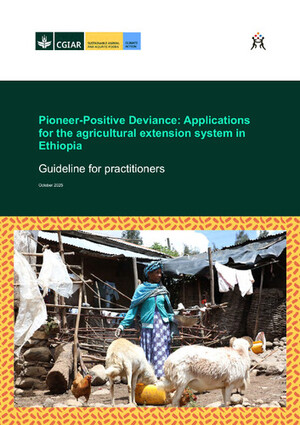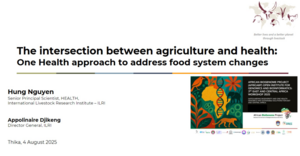
How a deadly outbreak unveiled the key to safer food

Photo credit: image credit: Discott/Wikimedia Commons
A recent article by Nancy Averett in Scientific African Magazine discusses how incidents of food poisoning in African cities may public awareness of food safety and kindle a citizens’ movement for safer foods. It focuses in part on the work of ILRI’s Delia Grace:
Food safety researchers like Delia Grace of the International Livestock Research Institute, part of a global food security partnership, are attempting to take elements of that formula—public outcry equals better food safety—and apply it to low-income African nations. “Public demand, getting the public to understand how to recognise safe food practices and then having them put pressure on the sellers to provide that, is something we feel has good potential because of how it has worked in more developed countries,” says Grace, who is both an epidemiologist and veterinarian, and has worked to increase food safety in numerous developing nations.
How a deadly outbreak unveiled the key to safer food
In mid-June 2017 Pretoria, South Africa witnessed five cases of Listeria monocytogenes a deadly foodborne bacteria. They were later established to have been infected by Listeria sequence type 6 (ST6), a very contagious strain of the virus. Despite being unusual, the government failed to follow up on the incident. Almost a year later, 216 people had died and up to 1,000 had fallen ill, making the incident the worst case of Listeria outbreak in South African history. Facing significant public outcry, the government finally reacted to the problem. Researchers traced the bacteria’s origin to a processed meat called ‘polony’, earning the manufacturers multiple lawsuits.
‘The whole city becomes a restaurant’
Food safety researchers are now using public awareness to encourage the development and enforcement of food safety laws in low-income African countries. ILRI recently initiated a $3.5 million project in Ethiopia and Burkina Faso to provide enhanced training for food sellers and regulators, as well as try to leverage the demand for safer food by consumers.
Both countries are characterized by restaurants and markets that are poorly regulated by the government. The research involves collecting quantitative data from producers, sellers, and consumers from both countries to establish poor practices in the food chain and where they occur. Similar research in Uganda established that despite locals knowing the significance of thoroughly cooking pork before consumption, they still placed raw vegetables and onions on the cooked meat and this exposed them to the risk of infection.
Studies revealed that consumers in African states often lack the necessary tools to establish whether or not food is safe, and thus use sensory cues to establish the safety of food. ILRI researchers are therefore trying to develop an affordable easy-to-use device, like a home pregnancy test, to indicate if food is safe or contaminated.
Poverty a stumbling block
Poverty is a major stumbling block in ensuring the consumption of safe foods. Fresh food is often highly-priced and accessible only to the rich, whereas the poor resort to buying cheaper and unsafe food.
The Listeria outbreak witnessed in South Africa was caused by “polony,” an affordable staple food for low-income families. Nevertheless, after intensive media campaigns by the South African government sensitizing the masses about the risk involved, low-income families started avoiding the commodity. This demonstrates the power of social media and public awareness. The government also required that public health officials follow up all Listeria cases. ILRI researchers intend to harness similar public awareness-driven change in Burkina Faso and Ethiopia.



















